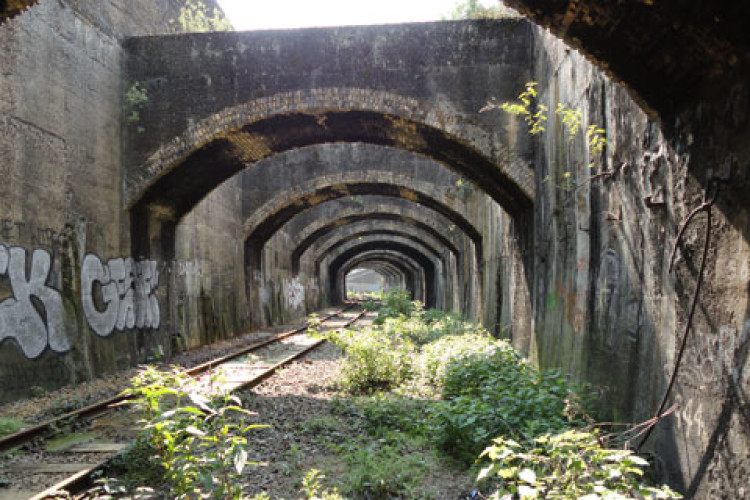A team of ordnance specialists is examining the Connaught Tunnel, part of the Crossrail route, for any bomnbs which failed to detonate during World War II.
During World War II, more than 40,000 explosive devices were dropped on London with the docks and rail lines particularly targeted.
The Connaught Tunnel was hit by a bomb in 1940, and Crossrail will be undertaking further repair work to the damaged section of the tunnel.
Ahead of major works on the Connaught Tunnel commencing next year, Crossrail is undertaking an extensive search of the wider construction area to identify any remaining undiscovered devices that failed to detonate on landing during World War II. The geology of the Royal Docks area meant that some devices which didn’t explode on landing sunk into the first few metres of soil.
A team of highly trained specialists are currently using armoured vehicles with magnetic equipment to investigate the ground around Connaught Tunnel. Their work involves sending probes into the ground in three metre intervals and analysing the results.
Detailed surveys
Crossrail already has a detailed understanding from existing London-wide maps and ground surveys about where potential devices could exist.
The dock floor above and around the Connaught Tunnel has already been searched by divers and was given the all clear. The specialists will shortly begin surveying under Connaught Bridge directly above the Connaught Tunnel.

Any potential devices identified in the ground through the survey will be reported to the authorities for further investigation. Similar ground surveys will be undertaken at other Crossrail sites in east London.
Linda Miller, Connaught Tunnel project manager, said: “We know from existing maps where bomb drops occurred in London during the 1940s. Ahead of major refurbishment work on the Connaught Tunnel, we will be undertaking detailed checks to identify whether there are any remaining devices that are yet to be uncovered. All the information obtained through our magnetic ground surveys will be used to update existing London-wide mapping as well as inform future construction projects.”
Dock draining
Crossrail has also announced a change in its approach to the Connaught tunnel project.
It originally planned to strengthen the central section of the tunnel by removing the existing steel linings and back filling the entire section with concrete foam. These tunnels would then have been enlarged by boring through the concrete to create tunnels that are large enough for Crossrail trains to pass.
Crossrail will now place cofferdams in the Connaught Passage between the Victoria and Royal Albert Docks, pump out the water and create a dry construction site allowing workers to dig down to the tunnel to undertake the enlargement work through a ‘cut and cover’ approach.
Miller said: “The central section of the Connaught Tunnel is in a poor structural condition. To ensure we can undertake the tunnel enlargement work as safely as possible we have now decided to drain a section of the Royal Docks and then dig down into the tunnel. This will be the first time the tunnel has been exposed from above ground since its construction in the 1870s. While we will be using modern techniques, we will be using a similar cut and cover approach that was used to build the original tunnel which saw the tunnel constructed first with the docks then built over the top.”
The cofferdam works which will commence in 2013 have been planned in conjunction with the Royal Docks Management Authority and timed to start after the London Boat Show.
Got a story? Email news@theconstructionindex.co.uk



